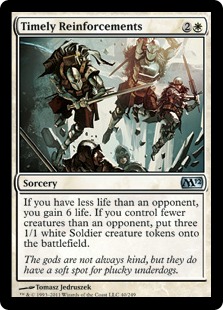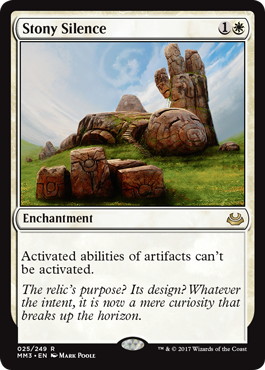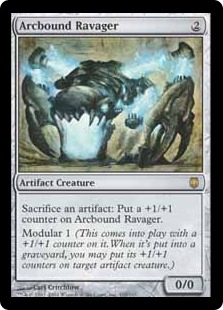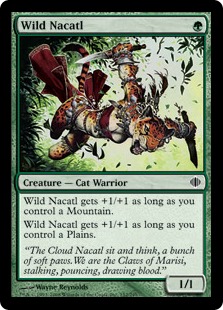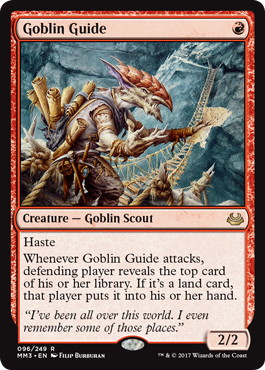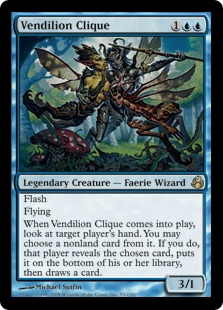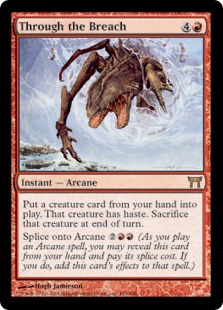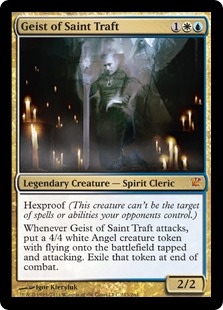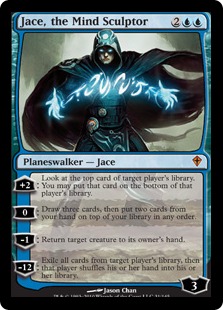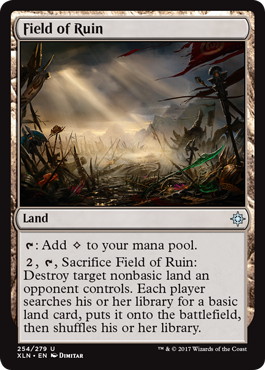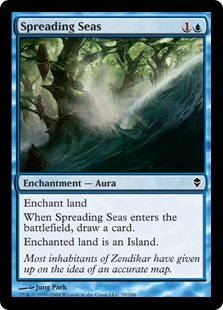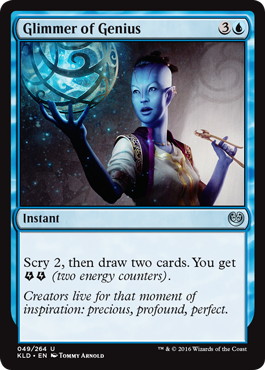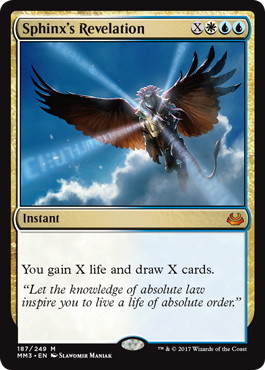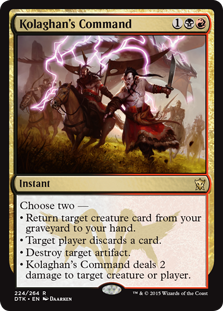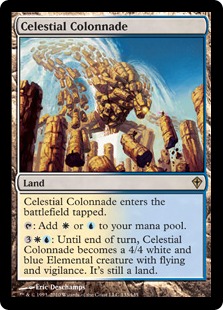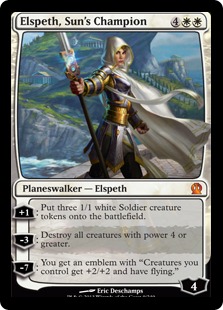When PT Bilbao was announced as a Modern event at the beginning of the season, I decided that I would take it as an opportunity to really master a deck. By “master”, I mean playing it forever, trying to understand it to its full extent and play it at least once a week so that I never have to “start over from scratch” for every Modern tournament.
This might sound like it is nothing, but that was a huge change for me. Playing once per week is something I had not done in years, if ever. It meant creating an MTGO account, which I did not really want to do at first. But most importantly, it meant finding a deck I would actively want to play with, even when I would not need to prepare for a specific event.
I tried a bunch of things, mostly Grixis Death’s Shadow (which I hated and still consider a fairly overrated deck) and Titanshift (which was fine, but not something that would make me want to fire a competitive league very often). But, when discussing decks for a team GP, my long-time friend and teammate Gregory Cassini told me I should play blue-white control. He was absolutely certain I’d like it and would be willing to keep playing it since it did everything I liked, and he was right.
Since then, I have played about a hundred leagues with the deck (which is much more than one per week), played the deck at every premier event I was allowed to, and intend to keep doing so. Hence, this article.
UW Control pre-bannings
Let me start with a general presentation of the deck, with a pre-bannings list. Actually this is the reference list that I used at GP Lyon to a top 16 record and scored 10-ish trophies with on MTGO.
- Pierre Dagen
- – UW Control
- Grand Prix Lyon
- (10th)
2 《Plains》
1 《Hallowed Fountain》
1 《Prairie Stream》
4 《Flooded Strand》
4 《Celestial Colonnade》
2 《Glacial Fortress》
1 《Mystic Gate》
4 《Field of Ruin》
-Lands (25)- 2 《Snapcaster Mage》
2 《Vendilion Clique》
-Creatures (4)-
4 《Path to Exile》
1 《Spell Snare》
1 《Remand》
1 《Negate》
1 《Logic Knot》
1 《Sphinx's Revelation》
3 《Cryptic Command》
3 《Supreme Verdict》
4 《Spreading Seas》
2 《Search for Azcanta》
2 《Detention Sphere》
2 《Gideon of the Trials》
1 《Jace, Architect of Thought》
1 《Gideon Jura》
-Spells (31)-
2 《Stony Silence》
2 《Rest in Peace》
1 《Spell Queller》
1 《Dragonlord Ojutai》
1 《Dispel》
1 《Ceremonious Rejection》
1 《Negate》
1 《Disdainful Stroke》
1 《Settle the Wreckage》
1 《Porphyry Nodes》
1 《Relic of Progenitus》
-Sideboards (15)-
The deck is a pretty formidable control engine, that combines three approaches to try and lock the game:
It plays out like a very typical control deck, trying do develop its mana while preventing the opposition from accomplishing too much via cheap interactions, before winning the game with expensive spells that will just outclass the cheaper our opponents are using to try and curve out.
One feat that could easily go unnoticed is how great the sideboard is for UW Control: white has by far the most powerful options in Modern when it comes to hating out specific strategies, and those cards are particularly easy to include in a strategy as adaptable as UW control. Over my last 100 matches, for example, my winrate preboard was just above 60%, but my winrate postboard is actually not too far from 80%.
The list I decided to show you was I think one of the most evolved version, taking into account all that happened at the Pro Tour and being fairly heavily targeted towards beating Tron. Other options existed and still do; the most important ones to keep in mind are 《Ancestral Vision》 instead of 《Serum Visions》, which makes for a much stronger late-game against control and midrange but a weaker one versus aggro and combo, and maindeck 《Runed Halo》 that wins a number of match-ups on its own (Titanshift or Boggles being notable examples) but is quite awkward with our planeswalker and fairly mediocre against most of the tier one deck.
Match-ups
Even though your match-ups will ultimately depend of your specific decklist, you can basically think of blue-white as a deck that is really good at beating sorcery-speed decks.
Most of the aggressive decks are good match-ups, simply because they rely on the relative absence of 《Wrath of God》 effects in Modern which, well, you have. Affinity, Merfolk, Elves, Zoo all fall into this category. Human is a slightly different beast, because if plays a lot of disruption and can actually prevent you from ever casting 《Supreme Verdict》 – but if you do, you instantly win. I’d call it a slightly unfavourable match-up, that will come down to how much you try to win it.
Burn is obviously something else, since they could not care less about 4-mana removal. The match-up should be bad from a strategic point of view (your try to stop an aggressive deck with much more expansive cards that do not even do much), but you just happen to run 《Gideon of the Trials》, and this guy is so good against them that it gives you the upper hand (with some help from your sideboard, of course).
Every midrange deck is favourable, simply because they play right into your own plan: they let you get to the stage where you just cast better cards, make use of your superior utility lands, and they threaten very little in the way of killing you. They can of course defeat you, but you should feel comfortable in the long run.
Combo decks are basically your weakness: you are very slow at killing them, which means they have all the time they need to set-up their gameplan, find the missing pieces and make sure they can get through your countermagic. You do have some great weapons, mostly 《Vendilion Clique》 and 《Rest in Peace》 against some of them, but that is pretty much it. You can divide combo decks into two categories: one the one hand, sorcery-speed combos that lose to 《Rest in Peace》 (Storm, Living End, Dredge) that are good match-ups. On the other hand…well, everything else that plays at instant speed. The main offenders here are all the variations of U/R Combo (Blue Moon, Blue-Red Pyromancer, Blue-Red 《Through the Breach》…) and all of the 《Collected Company》 decks (but to a lesser extent). You can find a few specific weapons, but it mostly comes down to your general strategy being bad at dealing with theirs, and I do not believe you can turn the U/R match-up around.
Jeskai is a very easy match-up if they do not play 《Geist of Saint Traft》, since you can eat at least fives burn spells to the face before you begin having to worry about it, and a resolved 《Gideon of the Trials》 is usually enough to make sure they simply cannot kill you, even if they draw their entire deck. You can actually see Raph Levy do just that to PV in the coverage of PT Bilbao. If they do run the Geist, which is getting more common to deal with 《Jace, the Mind Sculptor》, then the match-up gets much closer since they can punish you for tapping out and you are forced to leave a few verdicts in your deck post-board.
Finally, Tron is a match-up that has people divided. Most Tron players claim that it is heavily in their favour, and most UW players believe the opposite. In this classic scenario, the truth is almost always somewhere in the middle. But here, I believe it is not: I played that match-up extensively, and believe that a competent UW player should win it almost every time. There are a lot of traps to avoid, and I might write a guide about some specifics match-ups to present them in the future if you are interested, but overall Blue-white has all the tools and Tron is so linear that it cannot forge a game plan that is not stopped by those tools, even when fully aware of the problem. I do not remember losing to Tron in my last 20 leagues, and went a combined 7-0 against it in the last 2 Modern GPs and at the PT, so I’d say it is one of the big appeals that UW has.
Evolving the deck – the positive
All that I wrote before was true before the unbannings, and still is. Still, the recent changes had an obvious impact on how you should build you UW control deck, and I’d like to discuss them here, starting with the positive.
The positive can be described in four words: 《Jace, the Mind Sculptor》. We just got offered the single best kill we could hope for, one that fits our game plan perfectly since it does so much more that just killing the opponent and even makes our Wrath effects stronger. There is no doubt that you should include it to your list. It is an easy replacement for 《Sphinx's Revelation》, which was the worst card in the deck anyway: see, I felt like the deck needed something to create massive card advantage at some point outside of 《Search for Azcanta》 (because you have to side it out when you side in 《Rest in Peace》), and the two candidates were 《Glimmer of Genius》 and 《Sphinx's Revelation》. I went with Revelation while Nassif gave the nod to Glimmer, because I felt like it was a necessary tool to have to win the Jeskai match-up convincingly (resolving a 5+ Revelation is kind of easy, and shuts down their Burn plan in one swing). Not that I was particularly worried about Jeskai, since I think it is such a poor deck, but people keep playing despite the very low number of positive match-ups, so I wanted to be ready. Still, I fully agreed that Glimmer, at four mana, was a much better fit for the deck.
Well, Jace is the best of both world: a resolved 《Jace, the Mind Sculptor》 costs as little as a Glimmer, accomplishes way more, and is just as much of a guaranteed win against other control decks as Revelation was.
In order to accommodate Jace, you want to be able to deal with opposing creatures proactively, meaning that you would like to be able to jam Jace on turn four and untap with it for a 《Supreme Verdict》, not the other way around. This is something the former list could not really achieve, since that would mean burning 《Path to Exile》 super early, and you do not want to do that: giving them an extra land is not a big deal on turn 6, but is unacceptable on turn 1 if they play even single basic land. This is why 《Wall of Omens》 comes into play, since it it absolutely perfect at setting things up without overloading your deck with situational cards like 《Journey to Nowhere》.
Overall, this change is great for UW: you get a better kill, you get rid of a situational card, and you get to improve your match-up against a lot of fringe decks where the +2 ability is actually threatening (Lantern and Burn being good examples). It also makes our 《Gideon of the Trials》 even better, since they are one of the absolute best threats to deploy before an opponent casts his own Jace.
Evolving the deck – the negative
The negative is the appearance of a much better midrange deck that those peasants we used to crush in 《Bloodbraid Elf》 Jund. Jund used to be a walk in the park, and a deck you almost never faced. It is now the clear number one deck in Modern, and not quite as easy as it used to be.
Before BBE, you beat every midrange deck the same way: trade cards, score a little bit of card advantage here and there with 《Snapcaster Mage》 or 《Cryptic Command》, make sure your lands outvalue theirs with 《Spreading Seas》, and just kept doing that until you woke up with a full grip and ten lands against a whole bunch of nothing. Easy enough.
With BBE, it is actually unclear that a typical UW control will gather more cards over the course of a long game that the BBE + 《Kolaghan's Command》 engine will, which is something I had to address to make sure I remained a heavy favorite.
Before I go into the details, take a moment to consider the most important part: you do not have to do a whole lot to beat Jund with UW, even now. Yes, they have great cards, but your general strategy is still one that is designed to beat them, so it is just about not letting their specific cards trump the dynamic of the match-up. And this is something you can achieve in two steps:
Step 1- Make sure you have access to a little bit more card-advantage than they do.
This is actually the toughest part in terms of deck building, since you cannot just jam card draw in your deck and hope not to lose to their aggressive draws; you have to be a little smarter than this. After some tries, here is what I came up with:
-Kill 《Dark Confidant》: this one is easy, but crucial: 4 《Path to Exile》 will not be enough, so you need to add at least one more removal, and leave some wrath effects if you have two
-Ignore BBE, do not kill it: BBE is only a card advantage factor when both cards are relevant (BBE and whatever is cascades). 《Wall of Omens》 is great at making it only one card, since the Wall stops BBE and does not cost you a card. Another hidden value it has is that it blocks BBE without killing it, meaning that they cannot rebuy it with 《Kolaghan's Command》.
-Minimize the impact of 《Kolaghan's Command》: K. Command is not always two cards; given the right circumstances, it can even be less than a card. The first step is to stop them from rebuying BBE, which is where cards like 《Settle the Wreckage》 or 《Condemn》 become fine additions to 《Path to Exile》. You can also go much further, and side in 《Rest in Peace》 to stop K. Command, 《Tarmogoyf》 and 《Scavenging Ooze》 to some extent. Sounds great right? Yes, but you also shut down a big part of your own value plan in 《Search for Azcanta》 and 《Snapcaster Mage》. My solution at the moment is that I try to side in 《Rest in Peace》 when they do not know I will for sure (game 2), and then switch back for game 3. There are two benefits, the first one being that they could side in their own hate-grave against your 《Rest in Peace》 deck, the second being that you hit them when they are the most dependant on their graveyard g2, and then have a good change to face less 《Scavenging Ooze》 and not a single 《Nihil Spellbomb》 when you sideboard back into 《Search for Azcanta》 game 3.
-Make sure you draw every turn: I am not suggesting that you would forget to draw, of course. What I mean is that, due to the many discard effects, a lot of game will come down to both players being empty-handed and needing to draw. In this scenario, your deck should be engineered to be denser than theirs: if they blank and draw a 《Thoughtseize》, you do not want to draw a 《Logic Knot》 against it. Keep as little situational cards as possible, only 《Spell Snare》 and 《Cryptic Command》 as countermagic, and always keep in mind that whichever card you hold might get discarded (yes, lands too).
Step 2- Close the game
This one is simple: since you might not end up winning on card advantage, you have to press you advantage a little bit more to reduce the number of draw steps they have to topdeck their way back with a BBE or a K. Command: that means take a little bit more risk activating your 《Celestial Colonnade》 (which is another reason why you do not want to run countermagic post-board), and if you can, jam in one or two kills that will finish them. The absolute best in 《Elspeth, Sun's Champion》, that will win any game where they do not have 《Maelstrom Pulse》.
Final decklist and conclusion
With all that, here are the exact 75 I’m currently running online; this is a version built with the intend of destroying Jund and Boggles, while retaining good chances against Tron. It also makes a lot of efforts to beat Hollow One and Human, while accepting a tougher match-up against other Control decks than I usually do.
- Pierre Dagen
- – UW Control
2 《Plains》
1 《Hallowed Fountain》
1 《Prairie Stream》
4 《Flooded Strand》
4 《Celestial Colonnade》
2 《Glacial Fortress》
1 《Mystic Gate》
4 《Field of Ruin》
-Lands (25)- 2 《Wall of Omens》
2 《Snapcaster Mage》
1 《Vendilion Clique》
-Creatures (5)-
4 《Serum Visions》
4 《Path to Exile》
1 《Spell Snare》
1 《Remand》
1 《Negate》
1 《Logic Knot》
3 《Cryptic Command》
1 《Supreme Verdict》
1 《Wrath of God》
1 《Settle the Wreckage》
4 《Spreading Seas》
1 《Search for Azcanta》
1 《Detention Sphere》
2 《Gideon of the Trials》
2 《Jace, the Mind Sculptor》
1 《Elspeth, Sun's Champion》
-Spells (30)-
2 《Stony Silence》
2 《Rest in Peace》
1 《Vendilion Clique》
1 《Monastery Mentor》
1 《Dispel》
1 《Negate》
1 《Condemn》
1 《Celestial Purge》
1 《Timely Reinforcements》
1 《Terminus》
1 《Relic of Progenitus》
-Sideboards (15)-
Until next time,
Pierre Dagen
Recommended Items



